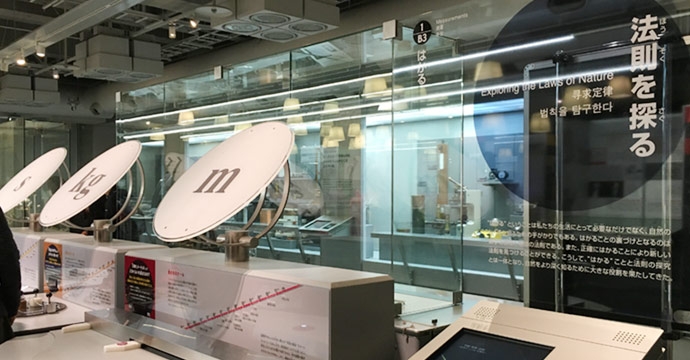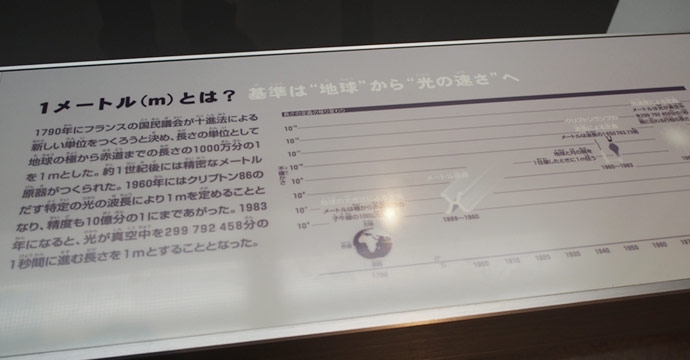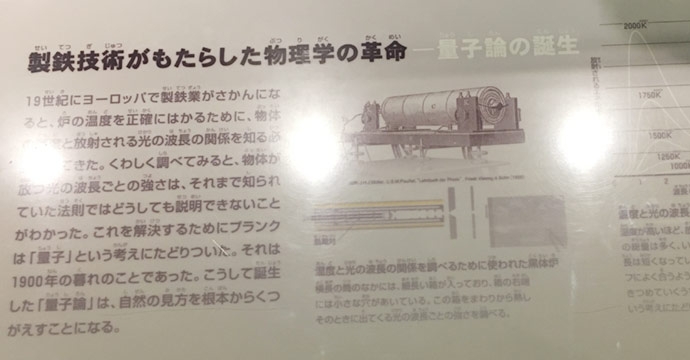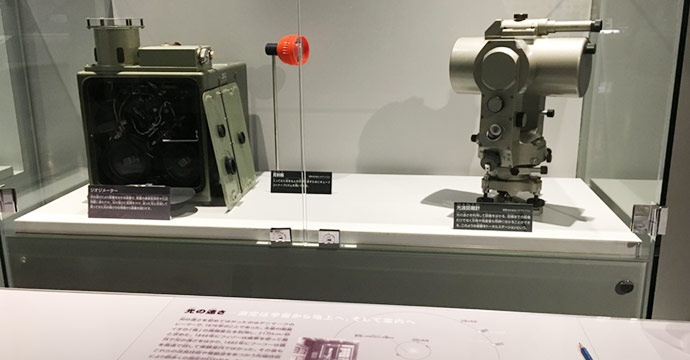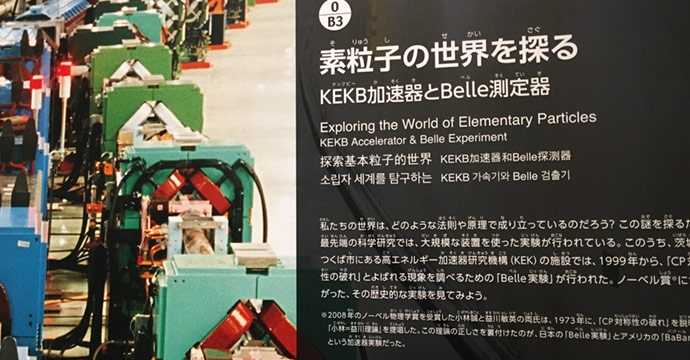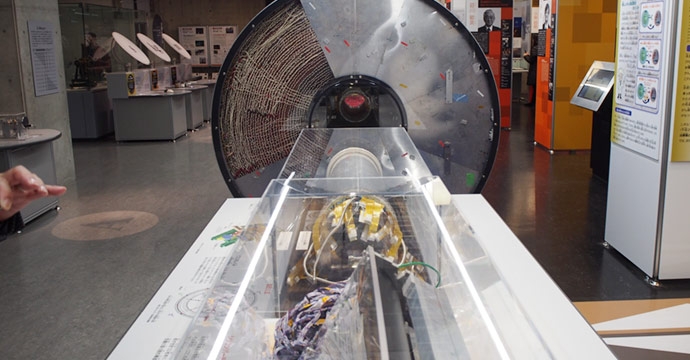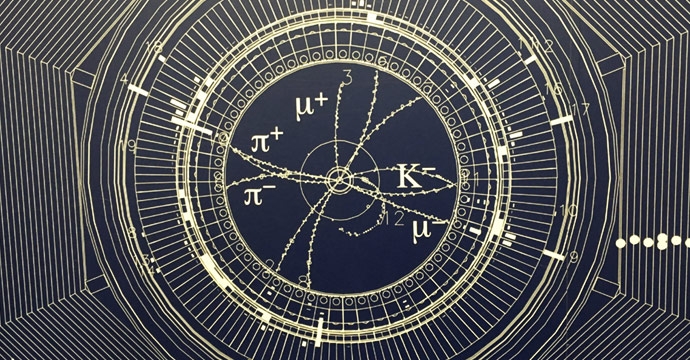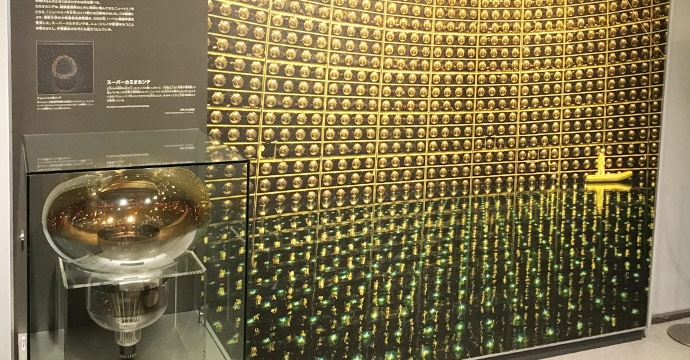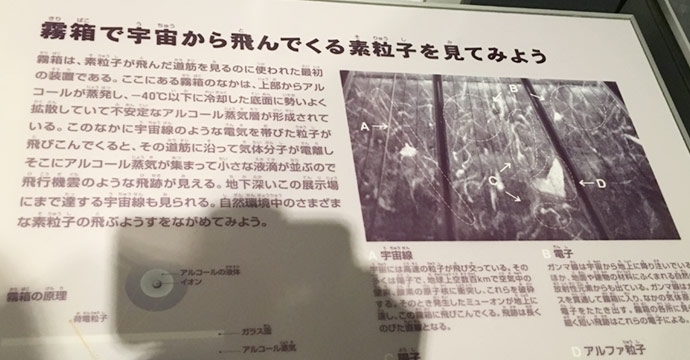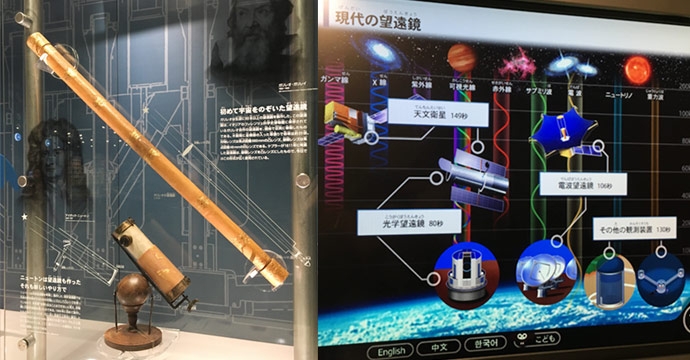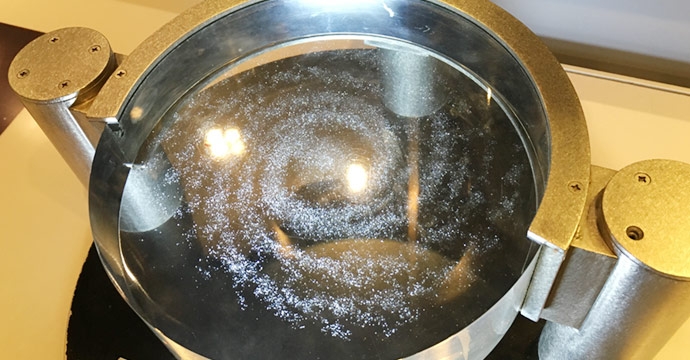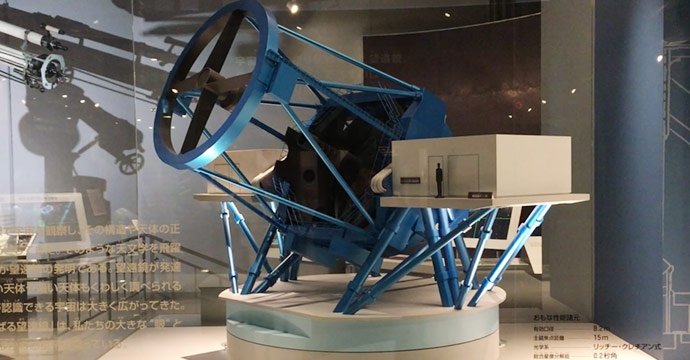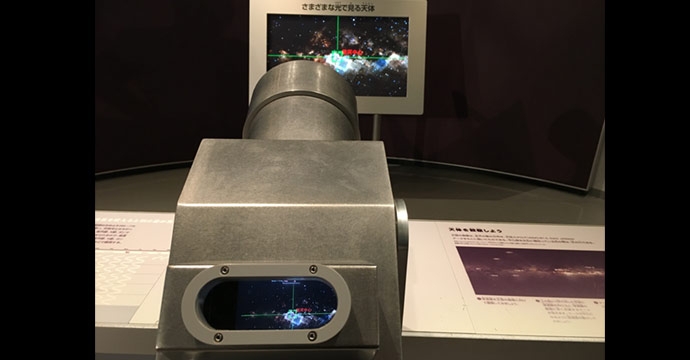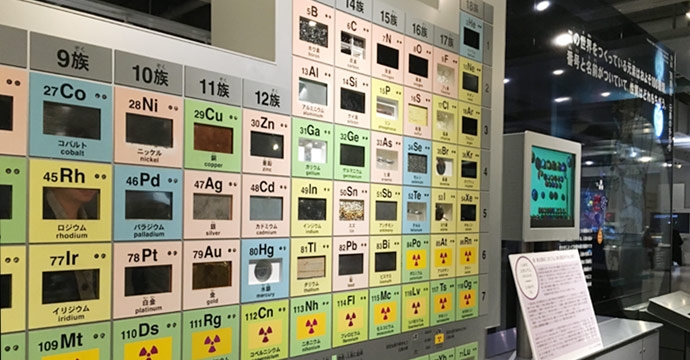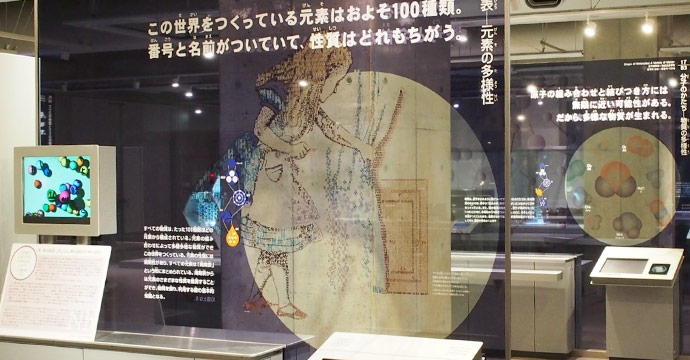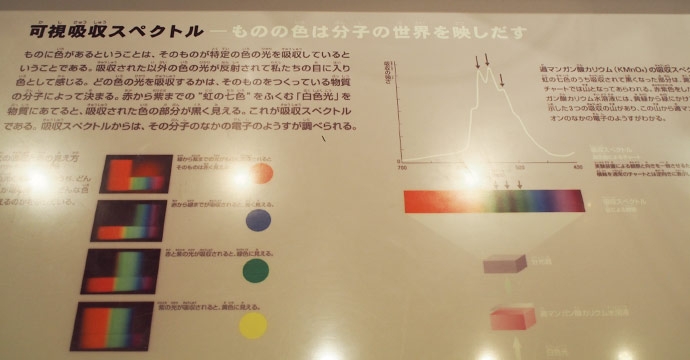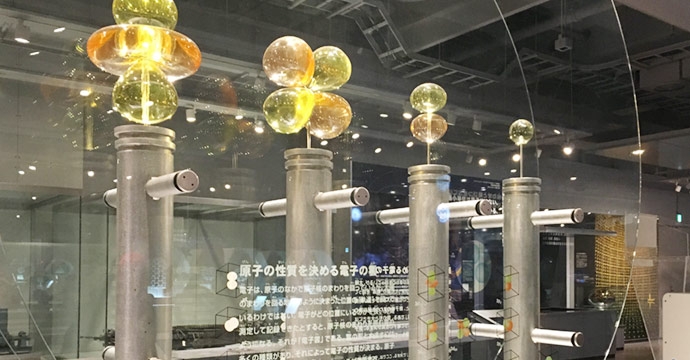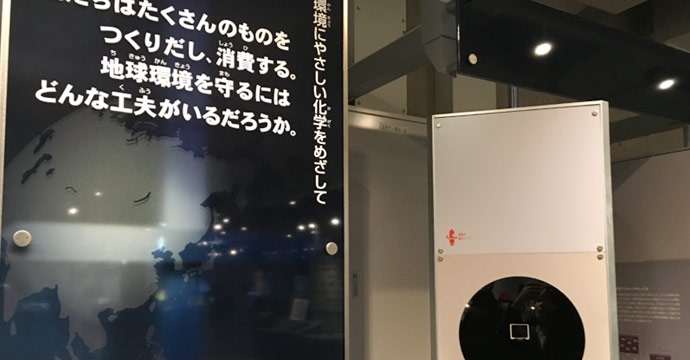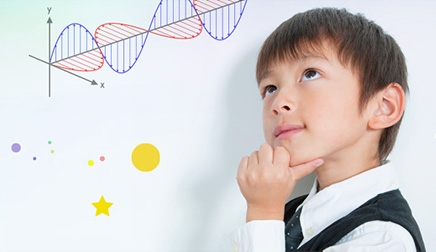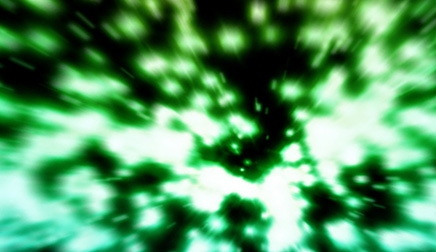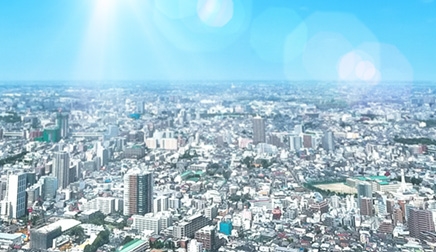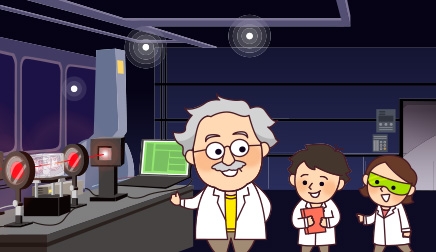 Home > Photon Boy adventure > Vol.04 Global Gallery at the National Museum of Nature and Science
Home > Photon Boy adventure > Vol.04 Global Gallery at the National Museum of Nature and Science
Vol.04 Global Gallery at the National Museum of Nature and Science
Photon Boy, “Totally thrilled by awesome natural mechanisms and science!”
Science includes a wide range of areas from research that looks at the world outside our planet through telescopes capable of finding far away objects, to research on molecules, atoms, and even elementary particles through microscopes and detectors capable of viewing ultra-tiny matter making up the world around us in incredible detail. In the Global Gallery on the 3rd underground floor of the National Museum of Nature and Science, you can see how science seeks to find out how and from what our world of space, matter and life is made through a permanent exhibition titled “Exploring the Structure of Nature.” These studies rely heavily on "Light" as a useful tool for unlocking scientific mysteries. I'm going to show you part of the exhibits. There are a whole lot of fascinating exhibits at the National Museum of Nature and Science, and I felt my curiosity growing more and more as I read the descriptions full of suggestive ideas.
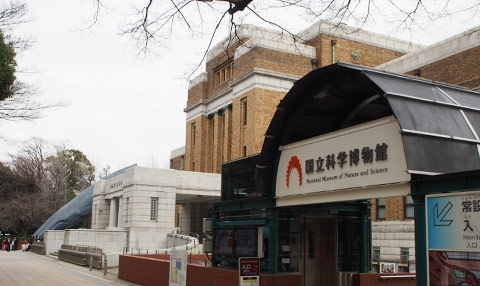
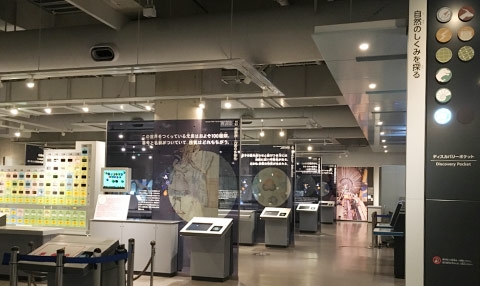
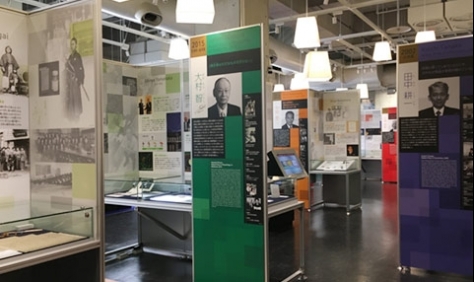
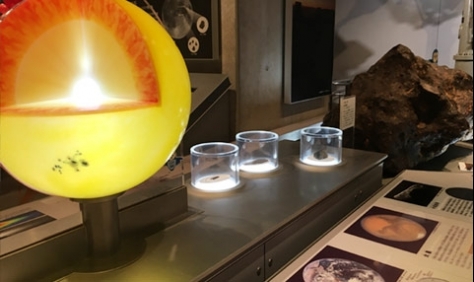
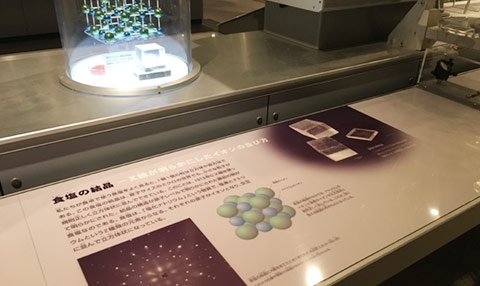

How do we decide on the “units” that we use to measure different objects and things?
Elementary particles are absolutely fascinating!
So what is the universe actually made out of? Here is a place where you can enjoy space travel.
If all matter became tinier and tinier what kind of world would this be?
How do we decide on the “units” that we use to measure different objects and things?
In the world of science, accurate “measurement” is an absolute basic requirement. In the “Exploring the Laws of Nature” corner you can find out for yourself how science creates standards for measuring things such as length, weight and time.

Elementary particles are absolutely fascinating!
Science is also shedding light on “elementary particles” which are basic to all matter within the universe. We cannot see them with our own eyes and can only imagine their world, but various theories and experiments are confirming that they really exist and are also discovering a new truth.

So what is the universe actually made out of? Here is a place where you can enjoy space travel.
What is the universe actually made out of? This corner offers displays and commentaries on various structures on different scales. The talk starts with the earth where we all live and the solar system, the stars in the sky above us, our galaxy and galactic clusters. The talk then shifts to the “Big Bang” theory, and I felt as if I were traveling through space!

If all matter became tinier and tinier what kind of world would this be?
Our bodies, the natural world, our planet and the universe are all made from ”matter.” What would happen if this “matter” became tinier and tinier? By taking advantage of various ways to understand the physical structure of molecules, atoms, and elementary particles, we can make the best use of this matter and create a better and more abundant society.
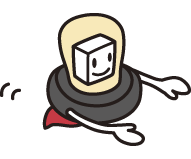

Please visit the following website to find more information on the National Museum of Nature and Science.



